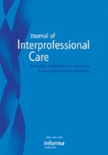
Journal of Interprofessional Care
Scope & Guideline
Transforming healthcare delivery through teamwork.
Introduction
Aims and Scopes
- Interprofessional Education (IPE):
The journal emphasizes studies related to IPE, exploring how collaborative educational experiences among health professions students can enhance their competencies and teamwork skills. - Collaborative Practice Models:
Research on various models of interprofessional collaboration in clinical settings is a core focus, aiming to identify best practices and outcomes associated with teamwork in healthcare. - Evaluation and Assessment Tools:
The development and validation of instruments to measure interprofessional competencies and collaborative behaviors are frequently discussed, providing valuable resources for educators and practitioners. - Patient-Centered Care:
A significant area of interest is how interprofessional teams can improve patient-centered care, emphasizing the importance of integrating patients' perspectives into collaborative practices. - Health Systems and Policy:
The journal addresses the implications of interprofessional collaboration on healthcare systems, including policy development and the organization of care delivery. - Qualitative and Quantitative Research Methodologies:
It encompasses a range of research methodologies, including qualitative studies that explore experiences and perceptions, as well as quantitative evaluations that assess outcomes of interprofessional initiatives.
Trending and Emerging
- Digital and Virtual Interprofessional Education:
There is a growing trend towards exploring digital and virtual models of interprofessional education, driven by the need for flexibility and accessibility in training. - Integration of Social Determinants of Health:
Research that investigates how interprofessional teams can address social determinants of health is increasingly prominent, highlighting the importance of holistic care. - Patient Engagement and Empowerment:
Emerging themes focus on strategies for enhancing patient engagement and empowerment within interprofessional teams, recognizing patients as active participants in their care. - Crisis Response and Resilience:
Studies examining interprofessional collaboration in response to crises, such as the COVID-19 pandemic, are on the rise, emphasizing the adaptability of healthcare teams. - Innovative Assessment Methods:
There is a trend towards developing innovative assessment methods for evaluating interprofessional competencies, including simulation-based and experiential learning approaches. - Transdisciplinary Approaches:
Emerging interest in transdisciplinary approaches to healthcare that incorporate diverse perspectives and knowledge systems is becoming more prevalent, fostering comprehensive care solutions.
Declining or Waning
- Traditional Educational Models:
Research focusing solely on traditional, uniprofessional educational models is less frequent, as the emphasis shifts towards integrated and collaborative approaches in training. - Static Competency Frameworks:
There is a noticeable decline in studies that rely on static competency frameworks without considering the dynamic nature of interprofessional teamwork and evolving healthcare needs. - Single-Discipline Perspectives:
Papers that emphasize single-discipline perspectives in healthcare are becoming less common, reflecting a broader understanding of the necessity for interprofessional approaches to address complex health issues. - General Attitudes Toward IPE:
Research that merely reports general attitudes toward interprofessional education without in-depth analysis of specific factors or outcomes is becoming less prevalent. - Focus on Hierarchical Structures:
Explorations of hierarchical structures in healthcare are waning as the discourse increasingly favors egalitarian and collaborative models of teamwork.
Similar Journals
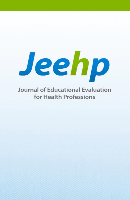
Journal of Educational Evaluation for Health Professions
Empowering educators with cutting-edge insights.The Journal of Educational Evaluation for Health Professions is a premier Open Access journal that has been dedicated to advancing the field of educational evaluation in health professions since its inception in 2004. Published by the Korea Health Personnel Licensing Examination Institute and based in South Korea, this journal holds prestigious positions in the academic community with a remarkable Q1 ranking in both Education and Health Professions (miscellaneous) categories as of 2023. It specifically serves as a vital platform for researchers, professionals, and students engaged in the assessment and enhancement of educational practices in health care training. The journal is indexed in Scopus with impressive rankings, including the top percentile in Health Professions and Education, underscoring its influence and reach within these critical fields. This journal not only shares innovative research but also aims to foster collaboration and dialogue among educators and policymakers to improve health care education globally.

Nurse Educator
Transforming Nursing Practice Through Educator Expertise.Nurse Educator, published by Lippincott Williams & Wilkins, serves as a pivotal resource in the field of nursing education and practice. With an ISSN of 0363-3624 and an E-ISSN of 1538-9855, this esteemed journal has been contributing to the development of nursing professionals since 1976 and is recognized for its impactful articles, reflected in its 2023 Q2 category rankings across various nursing and educational domains. Nestled within the competitive landscape of academic publishing in the United States, its substantial Scopus ranking underscores its significance, particularly in Nursing Fundamentals and Skills (Rank #7/15) and general nursing fields (Rank #52/139). The journal's scope encompasses essential topics pertinent to nurse educators, including pedagogy, clinical practice, and exam preparation strategies, ultimately aiming to enhance nursing education and improve patient care outcomes. By providing an engaging platform for innovative research and best practices, Nurse Educator stands as an essential resource for researchers, educators, and students committed to advancing the nursing profession.

International Journal of Medical Education
Transforming medical education for a brighter future.The International Journal of Medical Education, with ISSN 2042-6372, stands as a pivotal publication in the field of medical education, fostering innovation and critical discourse among educators, researchers, and practitioners worldwide. Published by INT JOURNAL MEDICAL EDUCATION-IJML in the United Kingdom, this journal has carved a niche for itself since its inception in 2011, achieving a commendable Q2 ranking in the 2023 category of Medicine (miscellaneous) as well as securing a position in the top half of Scopus ranks (Rank #142/398, 64th percentile). The journal aims to enhance the quality of medical training through the dissemination of high-quality research, reviews, and insightful perspectives, serving as a valuable resource for those eager to advance medical education practices. By offering an open-access format, the journal ensures that vital knowledge is accessible to a broader audience, promoting the sharing of ideas and collaborative efforts in the evolving landscape of medical education.

ACADEMIC MEDICINE
Fostering Excellence in Medical EducationACADEMIC MEDICINE is a premier journal published by Lippincott Williams & Wilkins, focusing on the multifaceted realm of medical education and training. Since its inception in 1940, the journal has become an essential resource for researchers, educators, and healthcare professionals dedicated to advancing the field of academic medicine. With an impressive Q1 ranking in both Education and Miscellaneous Medicine categories as of 2023, it ranks among the top publications in its field, reflective of its significant academic impact. The journal is indexed in Scopus, where it holds a commendable position within the 93rd percentile of Social Sciences Education, affirming its influence on contemporary medical education discourse. While not an open-access journal, ACADEMIC MEDICINE is committed to disseminating high-quality research, fostering knowledge exchange, and encouraging innovation in medical training across the globe. It serves as a critical platform for sharing the latest findings and practical insights in medical education, making it an indispensable resource for scholars and practitioners aiming to enhance their academic and clinical expertise.
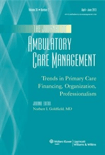
JOURNAL OF AMBULATORY CARE MANAGEMENT
Catalyzing change in health policy through rigorous research.JOURNAL OF AMBULATORY CARE MANAGEMENT, published by Lippincott Williams & Wilkins, is a leading peer-reviewed journal dedicated to advancing research and practice in the field of health policy, with a specific focus on ambulatory care management. Since its inception in 1978, this journal has served as a critical platform for disseminating innovative studies, insights, and methodologies that inform policy makers, healthcare professionals, and academic researchers alike. By maintaining an impressive ranking within the Q3 category in Health Policy and a Scopus rank of 148 out of 310, it underscores the journal's growing influence in shaping health policy discussions and decisions. The journal operates on a traditional subscription model, ensuring a high-quality review process while remaining accessible to those wishing to subscribe. With an ongoing commitment to excellence, the JOURNAL OF AMBULATORY CARE MANAGEMENT is essential for anyone involved in improving outcomes in ambulatory care settings and influencing health policy reforms, making it a must-read for researchers, practitioners, and students aiming to stay at the forefront of healthcare innovation.
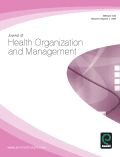
Journal of Health Organization and Management
Elevating the discourse on health organization and management.The Journal of Health Organization and Management, published by Emerald Group Publishing Ltd, serves as a pivotal resource for professionals, researchers, and students interested in the intersection of health policy and organizational effectiveness. With an ISSN of 1477-7266 and an E-ISSN of 1758-7247, this esteemed journal has been charting advancements in health management since 2003, showcasing articles that reflect rigorous research and the latest trends in the field. Hailing from the United Kingdom, the journal has established itself within the upper echelons of academic literature, currently enjoying a Q2 classification in notable categories, including Business, Management, and Accounting, Health Policy, and Organizational Behavior and Human Resource Management, as of 2023. With impressive rankings in Scopus, including a percentile rank in the 62nd for Business and Management, it is an essential platform for disseminating innovative ideas and evidence-based findings crucial for enhancing health care systems globally. While it operates under a conventional access model, the journal remains dedicated to fostering scholarly dialogue and advancing the understanding of health organization complexities.

Clinical Nurse Specialist
Fostering Growth in Nursing Scholarship.Clinical Nurse Specialist is a pivotal peer-reviewed journal published by Lippincott Williams & Wilkins that serves as a vital resource for nursing professionals seeking to enhance their knowledge and practice in advanced and specialized nursing fields. With an ISSN of 0887-6274, this journal has been a leading publication since its inception in 1987, providing insights into critical topics like assessment and diagnosis, leadership, and management in nursing. It ranks in the third quartile for multiple categories according to the 2023 rankings and has significant placements in Scopus rankings, highlighting the journal’s relevance and quality within its peer group. Although it does not currently have open access, its reach and impact are reflected in its robust contributions to nursing scholarship. Clinical Nurse Specialist is an invaluable resource for researchers, practitioners, and students aiming to stay abreast of the latest trends, evidence-based practices, and innovative solutions within the nursing profession.

BMC Primary Care
Fostering Knowledge to Transform Primary CareBMC Primary Care is a leading peer-reviewed journal published by BMC that provides a vital platform for the dissemination of research and developments in the field of primary care. Established in 2022 as an open access journal, it allows for greater accessibility and visibility of research findings. Operating from the United Kingdom, BMC Primary Care has rapidly assumed an esteemed position within the academic community, currently ranked in the Q1 category for both Family Practice and Medicine (miscellaneous) based on 2023 metrics. With a Scopus rank of #9 out of 56 in Family Practice, positioned in the 84th percentile, this journal serves as an essential resource for researchers, healthcare practitioners, and students seeking to enhance their understanding of primary care dynamics. Through a commitment to high-quality research, BMC Primary Care aims to foster innovation and effective practices that ultimately improve patient care and health outcomes.
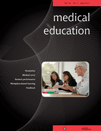
MEDICAL EDUCATION
Catalyzing Change in Healthcare Education Through ResearchMEDICAL EDUCATION, published by Wiley, stands as a leading journal in the fields of education and medical training, holding a prestigious Q1 ranking in both the Education and Medicine (miscellaneous) categories for 2023. With an impressive impact illustrated by its 94th percentile ranking in Social Sciences Education, this journal has been pivotal in advancing research and discourse since its inception in 1966. Dedicated to enhancing the quality of medical education through scholarly articles, innovative methodologies, and evidence-based practices, MEDICAL EDUCATION provides a vital platform for educators, researchers, and practitioners. Although it does not offer open access, its comprehensive reviews and studies are invaluable resources for those committed to developing effective educational practices in the medical field. This journal is instrumental in shaping the future of healthcare education and fostering knowledge exchange among professionals.
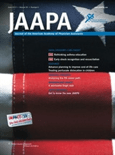
JAAPA-Journal of the American Academy of Physician Assistants
Connecting Research and Clinical Excellence.JAAPA - Journal of the American Academy of Physician Assistants is a leading publication in the field of Physician Assistant studies, providing a vital platform for the dissemination of innovative research, clinical practice insights, and professional development information. Published by Lippincott Williams & Wilkins, this esteemed journal has an ISSN of 1547-1896 and an E-ISSN of 0893-7400, reflecting its commitment to scholarly excellence since its inception in 1989. With a robust impact factor that situates it in the Q3 category of miscellaneous Medicine and Q2 in Nurse Assisting, JAAPA stands as a pivotal resource for healthcare professionals, researchers, and students aiming to enhance their understanding and practice of physician assistance. Accessible through various academic platforms, JAAPA aims to bridge gaps in knowledge while fostering a community of informed practitioners, thus contributing meaningfully to the evolving landscape of healthcare delivery in the United States and beyond.